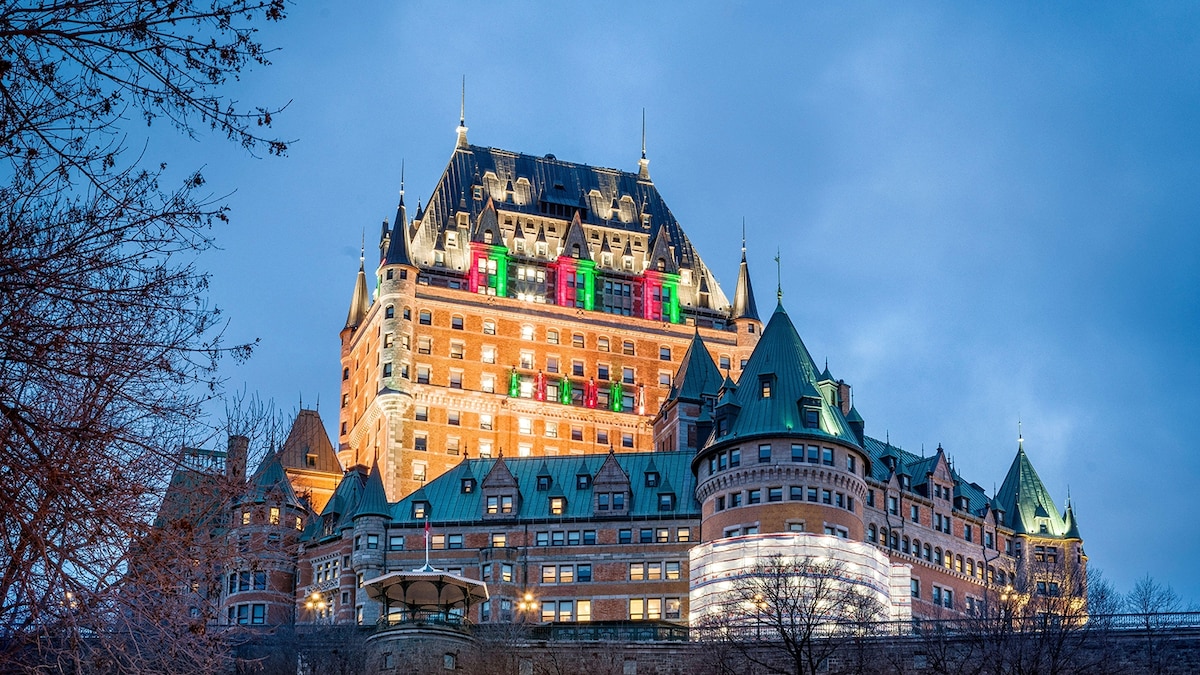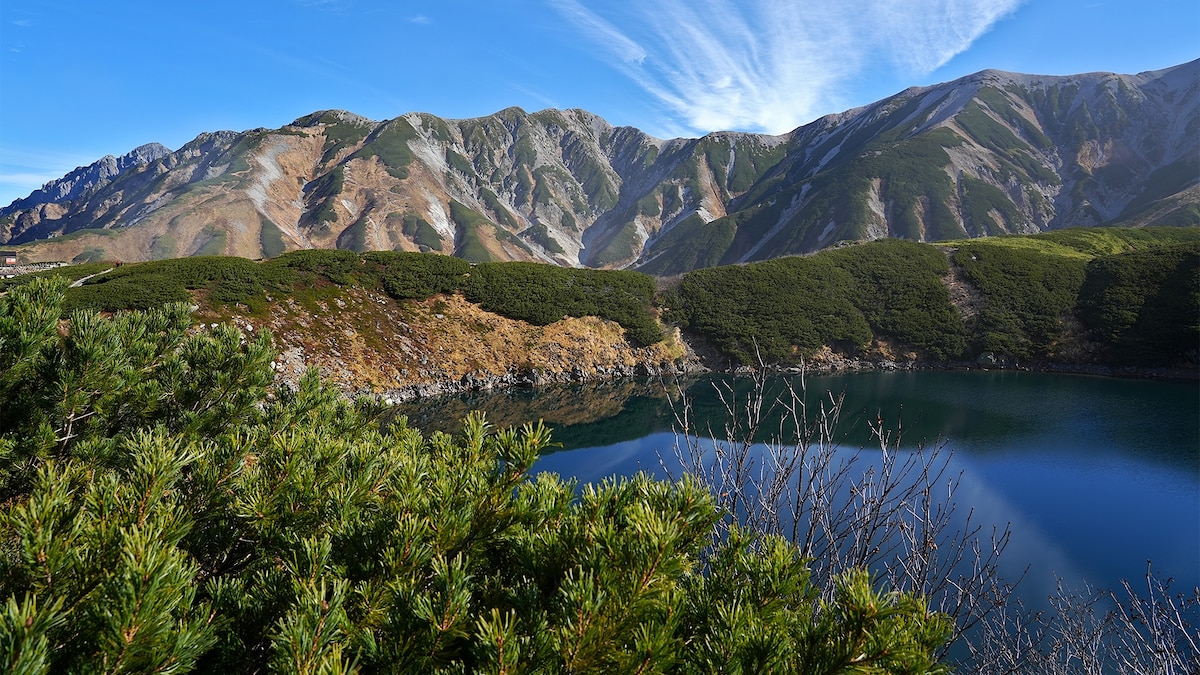Now Reading: For a slice of Parisian charm without the crowds, consider Quebec City
-
01
For a slice of Parisian charm without the crowds, consider Quebec City
For a slice of Parisian charm without the crowds, consider Quebec City

Craving the romance of Paris without the jet lag or legions of other people? The City of Light welcomed nearly 30 million visitors in 2023, and even more admirers plan to travel there since the 2024 Summer Olympics and reopening of the Cathedral of Notre Dame. Canada’s Québec City, a UNESCO World Heritage Site with French roots, emanates European elegance yet welcomes about a fraction of the visitors as Paris. Flights from the United States clock much shorter times too, providing travelers with Old World charm minus the travel fatigue.
French, British, and North American cultures weave together in this walkable, refined city. “Québec City is French-speaking, but it’s North American, and it’s unique,” says David Mendel, an author and historian who has lived in Paris and has also resided in Old Québec for almost 50 years.
French language, heritage, and architecture
Cobblestone pedestrian streets wind past candlelit cafes and shops adorned with yellow awnings and overflowing flower boxes. Seventeenth-century stone buildings topped with steep, mansard roofs huddle around every corner. Cafe seating spills into walkways and French voices lilt on the breeze. You might think you’re in Paris because Québec City was founded by Europeans and largely built by Europeans, explains Mendel.

Québec City, one of North America’s oldest European settlements, is a major draw for visitors who relish its quaint public squares and cobblestone streets, absent of skyscrapers.
Photograph by Renaud Philippe, The New York Times/Redux

The fortified upper town remains the only completely preserved walled city north of Mexico.
Photograph by Enrico Della Pietra, Alamy Stock Photo

The Cathedral-Basilica of Notre-Dame de Québec was founded in 1647 and is on the UNESCO World Heritage Site list.
Photograph by George Pachantouris, Getty Images
Erected as the capital of New France, the French empire in North America from the 1600 to 1700’s, Québec City stands on a promontory. Port of Québec, the oldest in Canada, connects the St. Lawrence River to the Great Lakes and the Atlantic Ocean for global trade.
Considered to be the world’s most photographed hotel, Fairmont Le Château Frontenac beams proudly from the cliff with its copper roof, circular and polygonal towers and turrets, and dormer windows. Canadian Pacific Railway built this beauty in the French “Châteauesque” style to encourage tourism. Narrow streets and public squares hug the winding topography. The fortified upper town remains the only completely preserved walled city north of Mexico. In fact, this enchanting municipality looks so much like Europe that it stunt-doubled for France in the 2002 movie Catch Me If You Can.
What to see in Québec City
Travelers can cover a lot of ground in a few days, as most of the major sights in Québec City lie within a few miles walk of the city center. Stroll Old Québec for boutique shopping in Quartier Petit-Champlain and art gallery and antique perusing on Rue Saint-Paul. With a star-shaped citadel above, Plaines d’Abraham urban park commemorates where the French and British fought for the fate of New France.
Similar to its European big sister, Québec City also boasts a Notre-Dame. The white stone, Neoclassical structure remains the first Catholic cathedral north of Mexico and contains one of seven holy doors in the world. “Walk through the courtyard archway and you’ll feel like you’re suddenly in Europe,” says Mendel. “While Québec City brims with history, it is very much alive, with some institutions still functioning in the same locations since the 1600s.”

People can toboggan down Dufferin Terrace during the city’s annual winter carnival.
Photograph by Yvette Cardozo, Alamy Stock Photo
Strøm Nordic Spa has numerous treatments available, including plunge pools, saunas, and flotation pools.
Photograph by Bianca Des Jardins via Strøm Nordic Spa
While Québec City may be chillier than Paris in winter, Canadians know how to champion the cold. The Québec Winter Carnival warms hearts with its spirited ice canoe races, frosty snow baths, and spiced Caribou drinks—a mulled wine best enjoyed between mittened hands. Toboggan down Dufferin Terrace or listen to the crunch of ice crashing in the St. Lawrence River as you’re enveloped in steam at the Strøm Nordic Spa. Visitors to Old Québec feel like they’ve been transported inside a snow globe during the holiday season.
Michelin-starred cuisine

In 2025, the province of Québec became Canada’s third destination to receive Michelin ratings.
Photograph by Hemis, Alamy Stock Photo

The French onion soup at Bistro Le SAM is topped with bubbly Le 1608 de Charlevoix cheese.
Photograph by DFMotion via Bistro Le SAM
In May 2025, the province of Québec became Canada’s third destination to receive Michelin ratings, after Vancouver and Toronto. François-Emmanuel Nicol, the chef at renowned restaurant Tanière3, wrote the letter that encouraged Michelin to deploy its anonymous inspectors. His AAA Five-Diamond, Relais & Château restaurant impresses, foraged Indigenous ingredients married with French cooking techniques, and this May earned him two Michelin stars.
“In France, the culinary scene is huge with classics like wild game,” Nicol says. “Québec has its own clout. With farmland all around the city and access to wild ingredients, foraging is a huge part of the Québec identity.” Diners rave about the gastronomically transcendent tasting menu, which can be savored in stone cellar vaults.
“We play on the fact that Québec is the perfect middle, basically between North American and European cultures with its French influence,” says Frédéric Cyr, culinary director at Fairmont Le Château Frontenac. Beyond poutine and maple syrup, you’ll find Québec is also known for nutty cheeses and sweet strawberries. Don’t miss the French onion soup blanketed by bubbly Le 1608 de Charlevoix cheese at Bistro Le SAM. Chefs rely on close relationships with small suppliers on the adjacent isle, Île d’Orléans, where 95 percent of the land is still devoted to agriculture.
Epicurean tours
While Paris is flanked by islands with historical buildings, farms flourish on Quebec City’s Île d’Orléans. Take a tour with Concierge du Terroir to sample sparkling wines and orchard delights like apple nachos. Even those with a petite sweet tooth will want to taste test the black currant vanilla swirl soft serve at Cassis Monna & Filles as well as the indulgent, Belgian chocolate-cloaked ice cream at Chocolaterie de l’Île d’Orléans.
Frantz Noël, co-owner of Conciergerie du Terroir, has also lived and worked in Paris. He explains that Québec City buzzes with a similar cafe culture to the French capital, but in a more relaxed fashion with patio chairs facing each other instead of out to the street. Tours to the island often start at Montmorency Falls, where the cascading commences nearly 100 feet higher than Niagara Falls.
Where to stay
Auberge Saint-Antoine, a boutique, museum hotel educates with artifacts from three centuries of Québec history on display. Just like a fairytale, Fairmont Le Château Frontenac enchants with its stenciled ceilings, crackling fireplaces, and views of the Saint Lawrence River.
For a cooler experience, travelers turn to North America’s only ice hotel: About 20 miles northeast of Old Québec, Hôtel de Glace is constructed each winter with a new artistic theme. Hold hands in hot tubs under the stars, then snuggle up in sleeping bags on ice beds inside igloos.
Cortney Fries (pronounced “freeze”) is an award-winning, Chicago-based freelance writer who specializes in family travel, outdoor adventure and wellness. Over the past decade, Cortney has covered hiking in Alaska, sleeping in an ice hotel, swimming with manatees, whitewater rafting the New River Gorge, ziplining in Costa Rica and kayaking in Tenerife. She’s always up for an adventure and believes that you should definitely try anything that makes you slightly nervous.
























